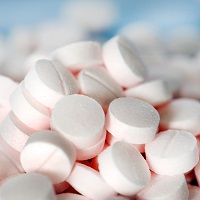Article
Reversing Deadly Side Effects of Over-the-Counter Painkillers
Author(s):
In addition to killing emotions and proving to be ineffective for back pain and osteoarthritis, the most common drug ingredient in the US can also cause severe bodily harm.

In addition to killing emotions and proving to be ineffective for back pain and osteoarthritis, the most common drug ingredient in the US can also cause severe bodily harm.
Acetaminophen, found in Tylenol and more than 600 other medications, has been sold as an over-the-counter painkiller since 1960. The ingredient can be deadly if used excessively and the US Food and Drug Administration (FDA) warns that it can cause serious liver damage if not taken correctly. Researchers from Duke University created a mathematical model that can reverse detrimental side effects caused by acetaminophen, as well as help the body recover itself.
“Acetaminophen overdose is also accompanied by dramatic changes in systemic glutamate-glutamine metabolism, including large drops in liver glutathione (for which glutamate is a precursor) and plasma Gln,” the authors explained in the Journal of Theoretical Biology.
The body naturally produces the molecule glutathione — which comes from three amino acid precursors, glycine, glutamate (Glu), and cysteine – in order to detox the liver. When an individual consumes too much acetaminophen the body needs more glutathione, with cysteine usually being in the shortest supply. The team discovered that during an acetaminophen overdose, liver cells trigger a gene that provide more cysteine but also pumps out and nearly depletes Glu. During this situation the skeletal muscles release the amino acid glutamine (Gln) into blood plasma as well.
When the liver not able to keep up the drug N-acetylcysteine (NAC) is administered to restore the levels of glutathione by adding more of the scarcest precursor. Based on this understand, the teamaimed to find if slightly altering the protocol could prevent severe liver damage. They created a mathematical model for Glu-Gln metabolism in liver and skeletal muscle and tested it on mice overdosed on acetaminophen.
“NAC has been the standard antidote for acetaminophen overdose for decades, and we are excited at the chance of improving it,” the authors said in a news release.
The data revealed that the standard NAC treatment can be improved by pairing it with Gln. Not only did it prove to inhibit liver damage but it helped the body’s natural recovery process. It was noted that just providing Glu by itself does not have the same outcome.
Since Gln has been linked to other pathological occurrences, these findings can be used during future research to further explore the body’s reaction during all types of conditions such as in the human immunodeficiency virus (HIV).
“The depletion of plasma Gln has been found to be correlated with poor patient outcome, and there is evidence that supplementation with Gln improves outcome in cases including trauma and major surgery, as well as burns,” the team added.





